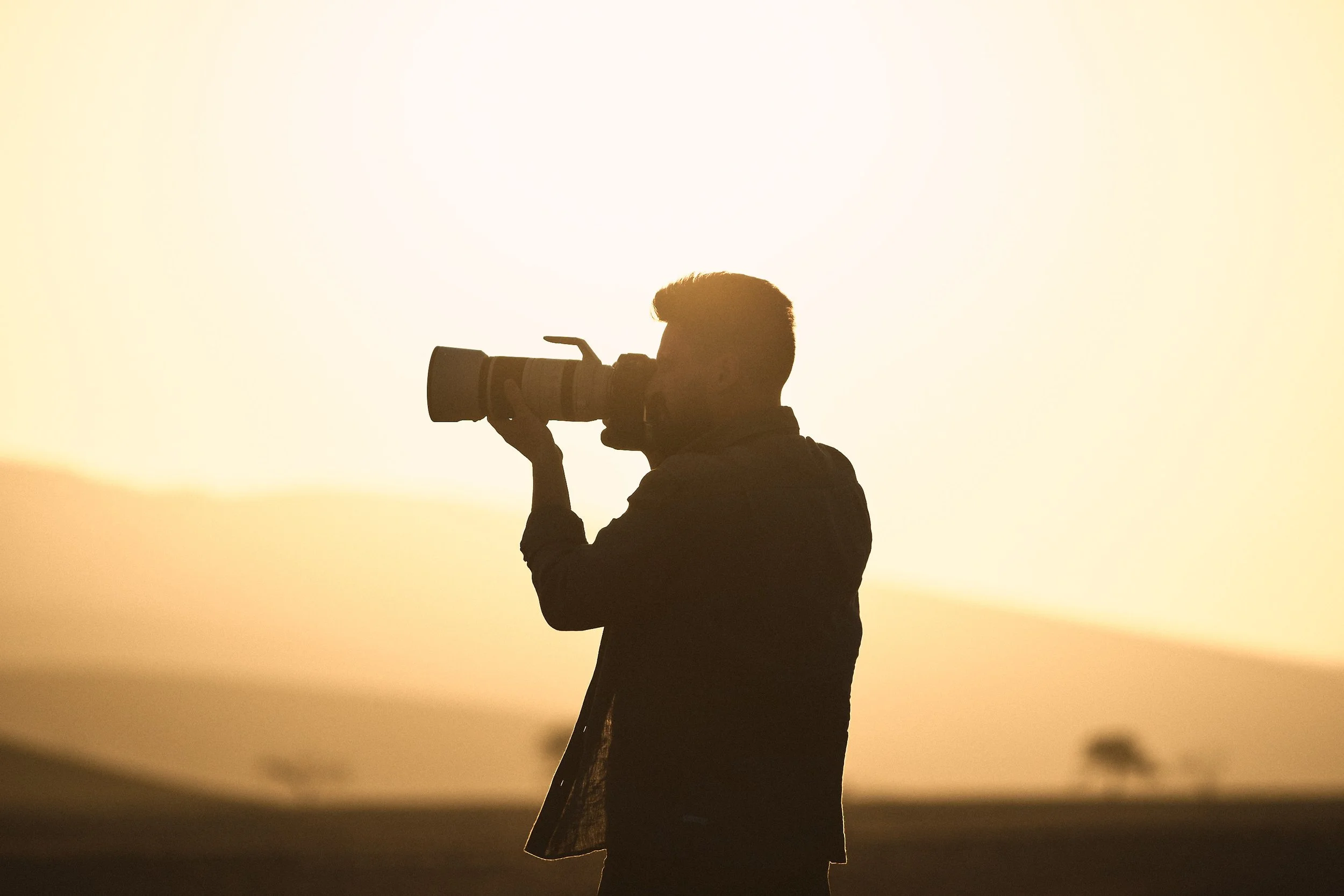Why I’m Not Upgrading to the Canon R5 Mark II (Yet)
When Canon announced the R5 Mark II, my inbox blew up. Messages from fellow photographers, YouTube comments, and even a few workshop guests asking,
“Are you upgrading?”
“Is this finally the perfect camera for wildlife?”
“Are you selling your R5?”
And the honest answer?
Nope; not yet at least.
That’s not to say the R5 Mark II isn’t an impressive piece of gear. It absolutely is. But after spending thousands of hours in the field with the original R5—on everything from snow-capped Alpine ibex to lions in the Kalahari—I’ve learned one crucial lesson:
Chasing a new gear is almost never the bottleneck in your photography.
The R5 Is Still a Beast (If You Know How to Use It)
Let’s get one thing straight: I love my R5.
I’ve dragged it through sandstorms in Namibia, baked it on the dashboard of my Hilux in Botswana, and shot with it in pouring rain at 3000 meters in the Alps. It’s been my go-to body for high-res wildlife scenes, wide compositions, and even the occasional bit of video. I pair it with the 100–300mm f/2.8 or the 24–105mm when I want to tell stories related to environment and conservation, and with the right technique, it works out great.
And the R5’s autofocus? Still one of the best in the game. I routinely get sharp sequences of birds in flight, even against messy backgrounds.
Do I wish it had a better buffer sometimes? Sure. But in the real world—not the spec sheet world—I rarely hit that wall.
What’s New in the R5 Mark II… and Why It’s Not Tempting Me (Yet)
So what does the new Mark II offer?
Faster fps
Better IBIS and improved rolling shutter
Faster burst with no blackout
Dual Digic processors for speed
Stacked sensor with better readout
Enhanced AI subject tracking
Sounds great, right?
But here’s the thing: more fps are great… until you realise how much storage, RAM, and processing power you need to handle those files. I’ve already upgraded my drives twice this year. And Lightroom—while it’s gotten better (especially with the new noise reduction tools, which you can read about here ), still chokes on massive libraries.
And when it comes to AI autofocus or blackout-free shooting… yes, those are welcome upgrades. However, they don't solve a problem I currently have.
I’m not missing shots due to gear issues at the moment. I’m missing shots because nature is unpredictable. Because I didn’t anticipate behaviour, or I positioned the car five meters too far to the right.
No camera solves that.
The Real Upgrade Is in Post—Not the Camera
This year, I’ve gotten more excited about post-processing upgrades than camera body launches.
Why? Because tools like Lightroom’s new AI Denoise have completely changed how I shoot.
I no longer hesitate to push ISO 6400, 8000, or even 12800 when needed. That freedom means I can keep shutter speeds fast and freeze the action—even in golden hour shadows or early morning overcast.
And guess what? The new AI denoise doesn’t even create a DNG anymore. It’s smoother, faster, and works beautifully across large batches.
That’s the kind of evolution that actually improves my workflow. Not a shiny new body that adds some features and gives me gear guilt.
Reliability Over Novelty
When you’re 3 hours into the bush with zero signal, backup batteries running low, and dust in every crevice of your gear… You realise fast what really matters.
Reliability.
I know my R5. I trust it. I know how it meters, how it locks focus, how it handles in the dark. I know its quirks. I know how to squeeze the best out of it under pressure.
Upgrading means starting over—learning a new camera’s personality, dealing with early firmware bugs, and adding more complexity to a system that already works.
I’m not saying I’ll never upgrade. But right now? Familiarity beats novelty every time.
I’d Rather Invest in Experiences
This is maybe the most personal reason. I’d rather take that €4500 and spend it on time in the field.
A week in Chobe. A month in Kgalagadi. A flight back to South Luangwa.
Those experiences—not specs—are where I grow as a photographer.
I’ve never had a guest on one of my workshops say, “Wow, if only I had a newer camera body.”
But I’ve had dozens say, “I wish I had more time with this leopard,” or “I didn’t anticipate the light fast enough,” or “I need to improve my composition.”
Those are the things that move the needle.
📸 Ready to master wildlife photography in the field?
Join me on an unforgettable workshop where we put these lessons into practice. We focus less on gear and more on craft because that’s what lasts.
SEE UPCOMING WORKSHOPS
Final Thought: Upgrade Your Skillset First
If you’re thinking about buying the R5 Mark II, go for it. It looks incredible. For some photographers, it may be the perfect tool.
But ask yourself first:
Does your current camera limit you?
Are you using everything your R5 (or whatever you have) can offer?
Do you have a robust backup workflow in place for handling large files?
Would that money be better spent on time in the field, mentoring, or education?
Because here’s the truth: a slightly older camera in the hands of an experienced, thoughtful photographer will consistently outperform a new flagship in the hands of someone chasing gear FOMO.
So no, I’m not upgrading to the R5 Mark II—yet.
I’m too busy shooting, learning, and spending my time where it matters most: out there.
📩 Want more no-BS gear talk, real safari stories, and hands-on photography advice?
Sign up for my newsletter and get weekly stories from the field—plus updates on upcoming workshops.
🎥 Or check out my YouTube channel for in-the-field breakdowns, gear tests, and honest photography insight.
Let’s keep the focus where it belongs.
Not on pixels. On purpose.






